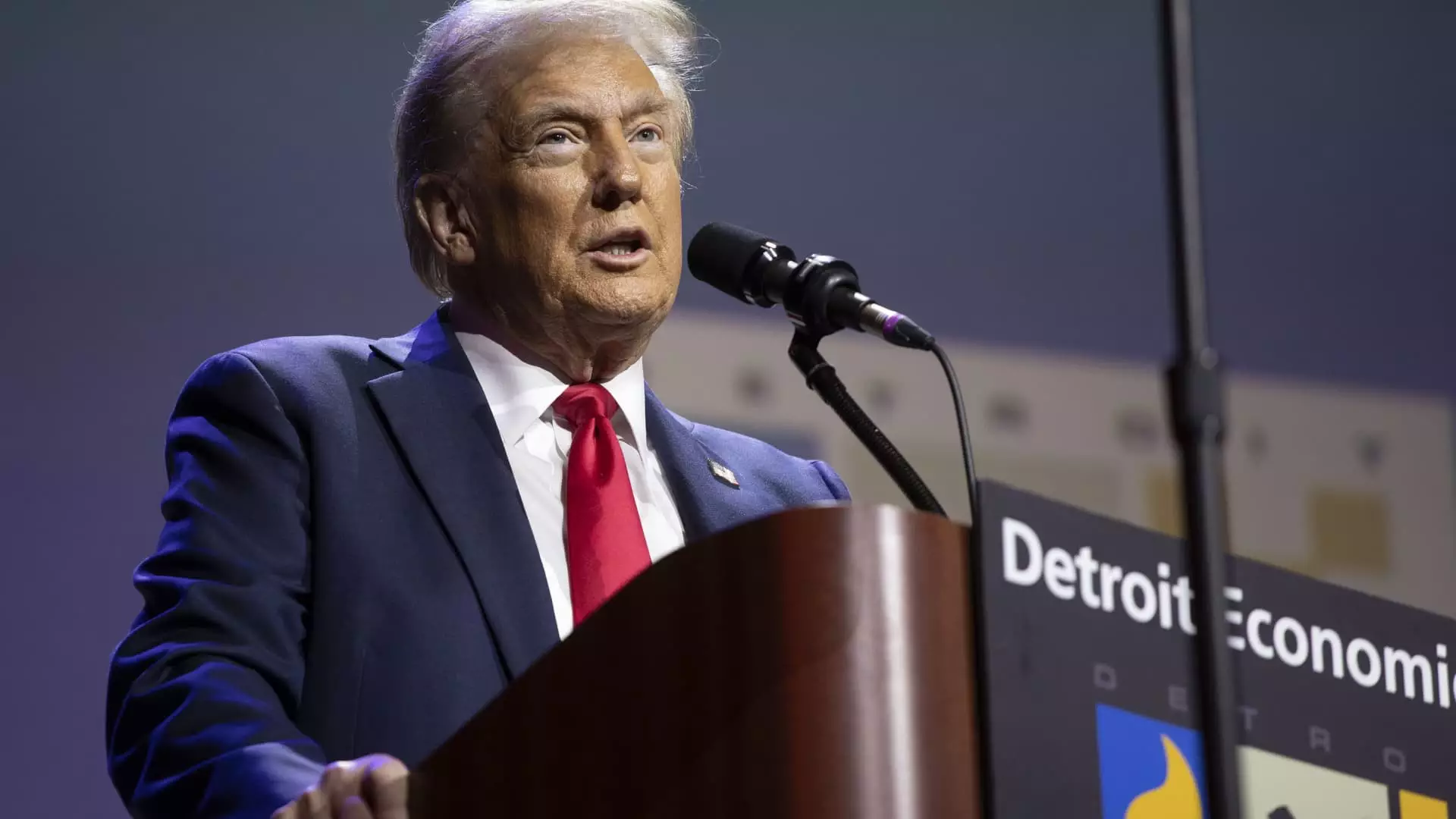Donald Trump’s economic stance on tariffs has remained a point of contention and focus, particularly as his potential re-election looms on the horizon. With whispers from his former trade adviser Robert Lighthizer indicating swift tariff implementations if Trump regains the Presidency, the economic landscape could shift dramatically. This article delves into the implications of Trump’s tariff proposals while considering economic experts’ warnings and the broader context of his policies.
During Trump’s initial term, tariffs were a cornerstone of his economic strategy, framed as a tool designed to protect American jobs and industry. Amidst rising concerns about foreign competition, especially from China, Trump heralded tariffs as a means to restore the manufacturing sector and create jobs domestically. Despite these claims, many economists have raised alarms over the potential negative repercussions of such sweeping tariffs.
In recent communications, Lighthizer has suggested that, if elected, Trump could implement exorbitant tariffs, including a staggering 60% on Chinese imports, alongside a 10% tariff on other goods. Analysts and investors are beginning to seriously entertain these possibilities, highlighting that Trump’s tariff strategies would likely be more aggressive than during his first term. The proposed tariffs not only reflect a broader economic ideology but also underscore how tariffs, in Trump’s view, serve multiple purposes: from job protection to geopolitical leverage.
Critics of Trump’s tariff strategies present a starkly different narrative. Experts argue that implementing such high tariffs could lead to rising consumer prices and decreased gross domestic product (GDP), counteracting the intended benefits of job creation. The increases in tariffs would likely translate into higher prices for American consumers, effectively acting as a tax on middle- and lower-class families. A report from a progressive group contends that Trump’s tariffs might lead to an average household burden of nearly $4,000 annually.
The Republican National Committee has sought to combat such criticisms by arguing that Trump’s tariff plans are coupled with broader economic reforms aimed at fostering growth—namely, less regulation, increased domestic oil production, and immigration control. Yet, the juxtaposition of these policy intentions with potential economic fallout raises questions about the feasibility of Trump’s promises.
The influence of Lighthizer within Trump’s campaign remains significant, especially as his position highlights how central tariffs are to Trump’s economic vision. Lighthizer’s role in advising the campaign reinforces the potential for immediate policy implementations once Trump takes office. With uncertainties surrounding which investor groups have been advised, the lack of transparency invites skepticism about the motivations and governance styles associated with impending tariff implementations.
Additionally, Trump’s strategy appears to take a harsh stance not only against foreign competition but also, complicating the narrative is the fact that many tariffs instituted during his administration have remained intact under President Biden. This continuation suggests that the political discourse around tariffs is more complex than a clear-cut Republican versus Democrat divide.
Trump’s penchant for utilizing tariffs as a bargaining chip becomes clear in his rhetoric. As he declares intent to impose whatever tariffs are necessary to curtail foreign competition, he frames tariffs as a tool for both negotiation and punishment. This duality of strategic coercion raises questions about whether such an approach truly benefits the American workforce or whether it merely serves as a politically expedient rallying cry.
Within this complex framework, the potential scenario where Trump could ‘flood the zone’ with targeted tariffs emerges. This could involve focusing tariffs on nations with significant trade deficits or particular industries. Nevertheless, the legality and logistics of enforcing such tariffs remain an area of uncertainty, likely to invite legal challenges and economic repercussions.
As conversations around Trump’s potential return to power intensify, the ramifications of his tariff policies remain deeply interwoven with broader issues concerning economic recovery and inflation. Cannabis sellers and agricultural producers, as well as manufacturers, are left to navigate the uncertain waters of an economy that may soon be influenced by a retrenchment into tariffs reminiscent of the past.
Ultimately, while Trump’s proposed tariffs may resonate with his political base as tools for resurrecting American manufacturing, the broader economic implications suggest a need for cautious consideration. A second Trump term would likely amplify the ongoing debate surrounding tariffs, challenging the electorate to weigh protectionist tendencies against the economic realities that could unfold.
Trump’s tariff proposals may serve as an enticing narrative but warrant careful scrutiny as stakeholders across various sectors prepare for possible shifts in the economic milieu. With the repercussions of such policies intertwined with consumer prices and job security, the discussion surrounding tariffs is far from straightforward, inviting both fervent support and pointed criticism.


Leave a Reply